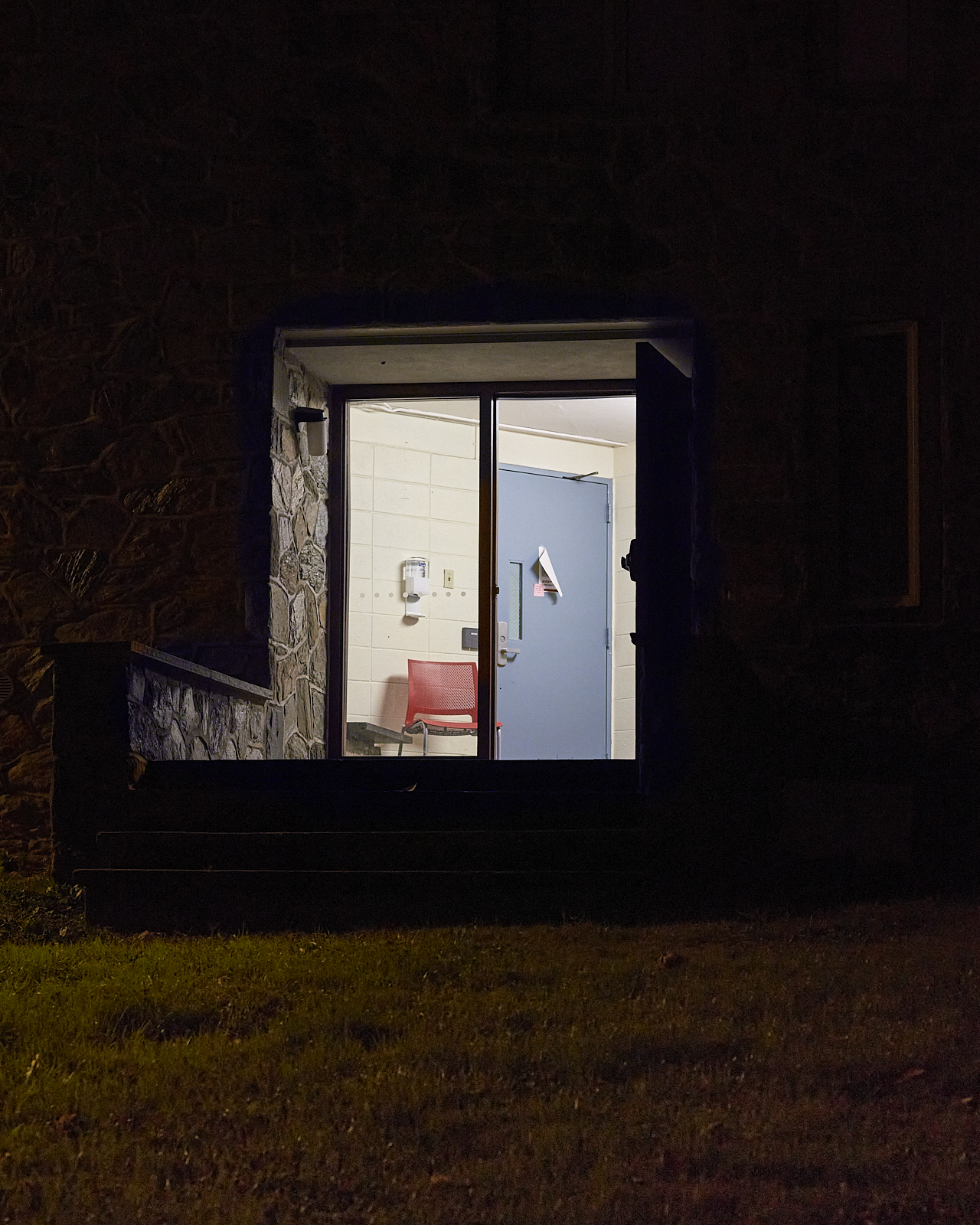Keith Smith noted: By saying he was going to make a picture of some thing, he ended up making second-hand, non-visual pictures (see “Not vivid, Not exciting.”). I wonder how often I take pictures of something I have imagined (whether or not I’ve said it aloud to others or silently to myself) rather than take pictures visually of things I have never described or imagined. How often do I not “see” something because I was fixated on finding what I hadn’t seen?
The other day I walked by a tree resplendent in fall color, leaves wafting down in the breeze. Under the tree was a lone chair, bathed in warm light reflecting up from the fallen leaves and filtering down through those still on the tree. I imagined that scene, returned with my camera, and took a dozen supremely mediocre pictures of it, from lots of different angles. Nothing.
The other night I wandered out after dark, looking to spend some time alone. Nothing more. As usual, I took my camera with me. I took a handful of pictures, some of which, in hindsight, have become interesting (to me) photographs. In the moment, I had no real sense of the scene being anything. I just took a picture. After the fact, and with some editing, I have ended up with photographs that I quite like, photographs that I had not previously described in words.

After noting the problem of taking pictures of scenes he has already described in words, Smith goes on to say:
I can look at a completed picture and find, ‘Oh, yes, I used tertiary colors here, complementary there, saturated color in this small shape as a solution to counter balance the weight of the heavy form in another part of the composition, et cetera.”
Smith’s observation seems, to me, to describe much of how people discuss composition. It is easy, after the fact, to find the rule of thirds, the golden spiral, golden triangle, balancing elements, leading lines, etc., and to assert that the photographer used them in taking the picture. As if to say: while out in the field, or even in the studio, the photographer viewed the world through some rule-of-thirds overlay, or golden spiral overlay, or whatever. More often, I think, what we mean (and perhaps should state clearly) is something like: Now that the photograph is complete, we can find in it evidence of the rule of thirds, complementary colors, a golden spiral, etc. I do not doubt that we can find evidence of those compositional rules, but I do doubt that those rules were operative when the photographer “took the photo,” i.e., when the photographer was out in the wild and pushed the shutter release button. In other words, insofar as “rules of composition” implies that they were operative in composing the picture, I don’t think they play much of a role. I think they might play a role in editing pictures and producing finished photographs.
The question, then, seems to be: When does a photograph acquire those aspects. In the comfort of the studio or the office? Then the photographer (and perhaps the photographer’s assistants) has the luxury to review all the pictures from a particular trip or day or session or whatever and has selected the pictures considered best (see, e.g., the oft-praised Magnum Contact Sheets book). From that subset of pictures the photographer (and perhaps some assistants) then often crops or edits that image further (see, e.g., Arnold Newman’s portrait of Igor Stravinsky).
Taking Smith’s comment seriously, I wonder how many pictures turn out to be dull, second-hand photographs because they merely reflect the rules of composition, and how many pictures made without any attention to the rules of composition turn out to be great photographs.
I’m not interested in the issue of “breaking” the rules of composition (I’m not interested in the rules of composition at all and all discussions of learning them to break them seem to me to be stale.). Instead, I wonder how relying on any rule, guiding principle, pre-described scene, goal, plan, expectation, affects my photography. I am motivated by Smith’s subsequent comments:
We must learn to see: nature, space, color; to see photographically, to see with our third eye, to read visual material; it is a constant struggle. We must find various ways of learning. One of many is concentration. We must daily practice observation — we are in the business of seeing. Seeing demands research, discipline, training and courage. It takes energy to be visually perceptive rather than to follow simulated vision.